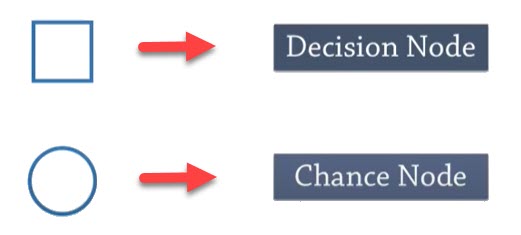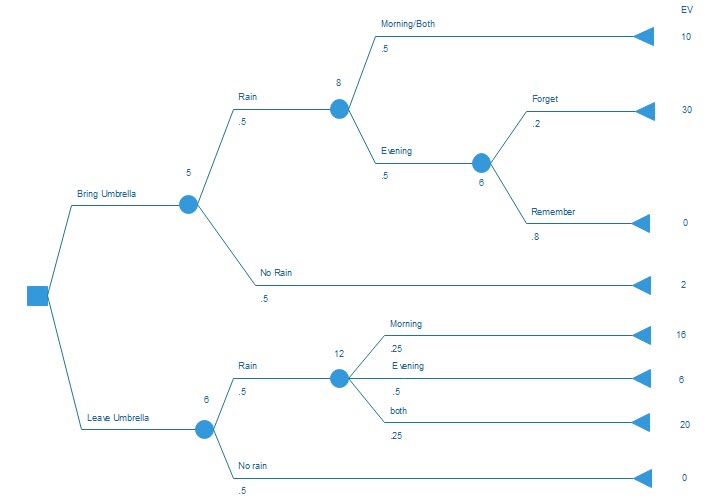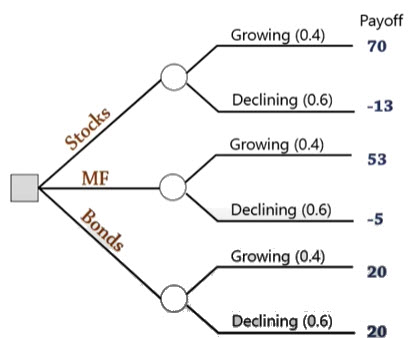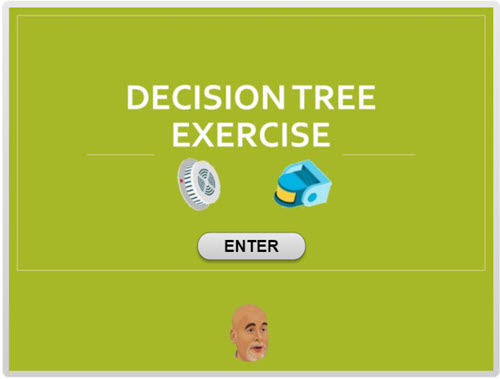Decision Trees
According to SmartDraw, a decision tree may be defined as " a flowchart-like diagram that shows the various outcomes from a series of decisions. It can be used as a decision-making tool, for research analysis, or for planning strategy." A decision tree will help you quantify in order to reduce what I have referred to a "free falling" within this interaction. By tracing the possible paths (branches of the tree) as expressions of probability and predications of expected value, the user can easily see a diagram of probable outcomes. Please note that a decision tree expresses outputs in terms of probability. Just as weather predictions might not be as accurate as we would like, so, too, may highly probable projections err!
There are two major elements within a tree, i.e. the decision node and the chance (probability) node:

How to Create a Decision Tree (taken from SmartDraw)
- Start the tree. Draw a rectangle near the left edge of the page to represent the first node. In this rectangle, write the first question, main idea, or criterion that will lead to a decision.
- Add branches. For every possible alternative draw a separate line that begins at the node and moves to the right of the page.
- Add leaves. The bulk of the decision tree will be leaf nodes. At the end of each branch add a leaf node. Fill each of these leaf nodes with another question or criterion.
- Add more branches. Repeat the process of adding a branch for each possible alternative leading from a leaf. Label each branch just as before.
- Complete the decision tree. Continue adding leaves and branches until every question or criterion has been resolved and an outcome has been reached.
- Terminate a branch. Continue adding leaves and branches until every question or criterion has been resolved and an outcome has been reached.
- Verify accuracy. Consult with all stakeholders to verify accuracy.
Testing 1 2
Test 1
Imagine: you believe it may rain; should you take your umbrella or not?

Test 2
Imagine: you have some money to invest and the possibilities are expressed in the following table:

What is your decision?


Consider working through the New Product Introduction (NPI) example offered below for more experience in creating and applying a decision tree:







